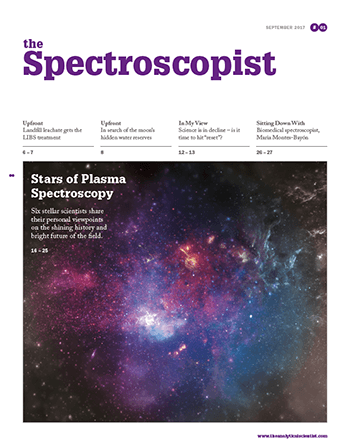The Future of the Fourth State
Plasma spectrochemistry’s significant impact on science, medicine, commerce, engineering, and technology over the past 50 years is impressive. But where to next? Of all the invention, development and rapid application of lasers and atmospheric pressure electrical discharges, the inductively coupled plasma (ICP) discharge has been the most commercially successful, with mature applications from medicine to commercial products, geochemistry to sclerochronology, nanomaterials to metallomics and ionomics. Commercially available instrumentation is critical to the success of a spectrochemical source, and Fassel and Greenfield’s advocative ground work in the 1960s later resulted in the relatively rapid commercialization of ICP-MS. The development of solid-state detector arrays for emission spectroscopy and recently, mass spectrometry, revolutionized and promoted user-friendly plasma spectrochemical instrumentation. The quest for lower limits of detection and matrix-free determinations has driven numerous other instrument developments, including multiple quadrupole MS arrangements and collision/reaction cells, as well computational correction techniques and even chemistry. The applied result? Breakthroughs in earth sciences, forensics, nutrition, toxicology, and medicine. The power of modern computers and information processing systems has reduced the workload in processing, correcting, and reporting the substantial data flow found in modern spectrochemical analysis, and provided us with automated calibration, diagnostic, and maintenance protocols. Computational capabilities have also led to detailed modeling and simulations of the plasma, interface, and spectrometer among others, which (when coupled with appropriate experiments) can be characterized and improved in research laboratories, leading to new plasma system designs. But instrumentation comes and goes – usually because of business decisions rather than fundamental limitations.To read the full September 2017 Issue of The Spectroscopist...





